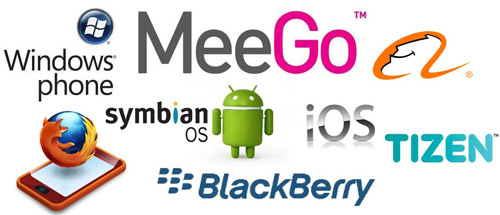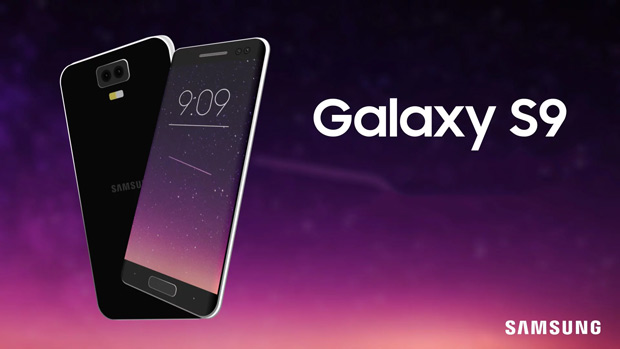Samsung, BlackBerry or Nokia all wanted to develop their own operating systems but still had to return to Android
In the past, some smartphone manufacturers such as Samsung, BlackBerry or Nokia, once wanted to create their own operating system to get rid of Google but eventually failed and had to return to Android.
Android operating system was released by Google in 2008, after Apple iOS for a year. At that time, Symbian was dominating the market with Nokia or RIM with BlackBerry OS so Android became smaller.
The Android platform is open to all manufacturers who need to have a fast development. After only 3 years of launch, Android has become the most popular operating system on smartphones and dominated until now. Android's expansion has forced BlackBerry or Nokia to change both software and hardware. However, some firms have opted to develop their own operating system or create an alliance instead of shaking hands with Google.

About 10 years ago, there were many executives, not just iOS and Android today.
Nokia has taken many measures to improve the Symbian operating system but has no results. Eventually the phone company decided to work with Microsoft by using Windows Phone, but also failed. Even after accepting Android in 2014, Nokia is still trying to get rid of Google's shadow by making an interface similar to Windows Phone and using Microsoft applications. This left Nokia in a crisis and sold itself to HMD Global. Nokia's new owner has diverted the company's phones running the full Android operating system, even taking the early Android update as a strength.

Currently, Android is the dominant platform for the smartphone market. Photo: iMore.
Similar to Nokia, BlackBerry also uses its original platform after it can be used with the touch screen to fight Android and iOS. In 2010, BlackBerry launched the Torch with a large multi-point screen, sliding up to reveal the QWERTY keyboard. At the same time, however, the iPhone 4, Motorola Droid X or HTC Evo 4G were also launched, making BlackBerry Torch to be inundated.
By 2013, the company launched its own BlackBerry 10 operating system, can run Android applications installed from outside but due to low compatibility, difficult to use, depending on Google Service, it was killed in the year. 2016. After changing owners, BlackBerry chose Android as the platform and attracted more users.
Samsung, one of the rising smartphone companies thanks to Android, also wanted to reduce dependence on Google. In 2009, Samsung launched the Bada operating system developed by the company on the Wave phone and in 2013 was Tizen OS operating system. However, because the phones running Samsung's own operating system do not attract users, the company then focuses on Android.

After unable to get rid of Google, Samsung focused only on Android.
Although it is impossible to get rid of Android on smartphones, Samsung decided not to rely on Google for smart watches and smart TVs. These devices of Tizen use instead of Wear OS and Android TV operating system.
Currently, Android has a market share of 85%, and iOS is 15%. Even, according to forecasts, by 2023, Android will increase strongly, accounting for 86.7% of the market share, while iOS shrinks to 13.3%. These figures show how other phone manufacturers now rely heavily on Android.
You should read it
- Android 5.1 will be released in February, the silent mode returns
- Google will directly update automatically for Android Wear
- The most notable new feature of Android 8.0 Oreo
- The whole technology world guessed the wrong name of Android L?
- Android history is fully expressed through short video
- A picture worth pondering about the Android world today
- Google postponed Android 5.0 update for HTC One M8
- Unihertz Titans: The 'BlackBerry Passport' runs the Android operating system
May be interested
- 75% of Android apps will be compatible with Nokia X
 nokia has just said that up to 75% of android apps today work well on the nokia x, x + and xl smartphone trio that it launched at mwc.
nokia has just said that up to 75% of android apps today work well on the nokia x, x + and xl smartphone trio that it launched at mwc. - BlackBerry boss criticized Samsung KNOX
 recently, a university in israel has discovered a flaw in galaxy s4 secured by knox that allows crooks to steal information from the computer. although samsung has cleared the error belongs to android operating system, not knox, blackberry still does not forgive korean phone company.
recently, a university in israel has discovered a flaw in galaxy s4 secured by knox that allows crooks to steal information from the computer. although samsung has cleared the error belongs to android operating system, not knox, blackberry still does not forgive korean phone company. - Nokia C2: Single camera, Android 9 Pie Go Edition, 4G connectivity
 hmd global recently unexpectedly launched the nokia c2 - a new low-cost smartphone that follows the nokia c1 model launched in february.
hmd global recently unexpectedly launched the nokia c2 - a new low-cost smartphone that follows the nokia c1 model launched in february. - Use BlackBerry Passport for the first time
 so is the canadian mobile phone blackberry passport event officially closed with interesting information. you can buy blackberry passport in some countries around the world, here are some basic guidelines for new users of blackberry passport as well as bb10 in general.
so is the canadian mobile phone blackberry passport event officially closed with interesting information. you can buy blackberry passport in some countries around the world, here are some basic guidelines for new users of blackberry passport as well as bb10 in general. - Super product Nokia 8 Sirocco, running Android One, the price of iPhone X
 after struggling under the shadow of microsoft, nokia returned to its new companion hmd.
after struggling under the shadow of microsoft, nokia returned to its new companion hmd. - Instructions for changing and resetting passwords for BlackBerry ID
 many users sometimes get confused when using blackberry 10, maybe you still have difficulties in changing and setting id password on blackberry 10. here i would like to guide how to change the password of blackberry id. you follow the following steps to proceed.
many users sometimes get confused when using blackberry 10, maybe you still have difficulties in changing and setting id password on blackberry 10. here i would like to guide how to change the password of blackberry id. you follow the following steps to proceed. - Reason for not buying Nokia N9
 nokia has just revealed its n9 smartphone yesterday (june 21). this is considered a 'flagship' smartphone from nokia and the first device to operate on meego operating system
nokia has just revealed its n9 smartphone yesterday (june 21). this is considered a 'flagship' smartphone from nokia and the first device to operate on meego operating system - BlackBerry 10.3 can run the app from the Amazon Appstore
 blackberry has just announced that the company has reached an agreement with amazon, allowing blackberry 10.3 users to download and install applications from the amazon appstore.
blackberry has just announced that the company has reached an agreement with amazon, allowing blackberry 10.3 users to download and install applications from the amazon appstore. - Nokia X6 sold out in just 10 seconds in China
 nokia recently introduced x6, the first attempt to put rabbit ears on its products like many other android devices.
nokia recently introduced x6, the first attempt to put rabbit ears on its products like many other android devices. - Nokia 'dies'... again
 when hmd announced it was starting to make nokia phones, the idea was exciting - nokia would become an android oem like everyone else, a necessary shift after years of 'sinking' on windows phones under microsoft.
when hmd announced it was starting to make nokia phones, the idea was exciting - nokia would become an android oem like everyone else, a necessary shift after years of 'sinking' on windows phones under microsoft.










 Huawei already has its own app store, can Google Play replace it?
Huawei already has its own app store, can Google Play replace it? 2019 Asus Vivobook, popular laptop with super high-speed SSD 512GB SSD storage, priced from 11.99 million
2019 Asus Vivobook, popular laptop with super high-speed SSD 512GB SSD storage, priced from 11.99 million Apple launched the MacBook Pro upgrade with many notable options
Apple launched the MacBook Pro upgrade with many notable options 49 million Instagram users leak personal information, mostly celebrities
49 million Instagram users leak personal information, mostly celebrities Already have Windows 10 May 2019, beautiful Light interface, updated only!
Already have Windows 10 May 2019, beautiful Light interface, updated only! Tor browser is available on Google Play
Tor browser is available on Google Play